Watch this video to discover a hidden Pittsburgh gem, The Run—and learn about two serious threats it faces. Our neighborhood needs flood relief, not a new roadway running through it and the neighboring public park. 8-10 million roadway dollars are better spent on infrastructure needs left unaddressed for decades in Pittsburgh neighborhoods. Read the alternative plan and sign the petition!
Pittsburgh Water Defunds Four Mile Run Stormwater Project
On April 22, District 5 City Councilor Barb Warwick held a post-agenda hearing on Pittsburgh Water’s announced “pause” on the Four Mile Run project and other flood mitigation projects in the city. Representatives of Pittsburgh Water (formerly PWSA) and the U.S. Army Corps of Engineers attended and answered questions.
Shifting funds and priorities
Ms. Warwick asked on April 22 why the water authority determined that the project is not as urgent as other flood projects that are still moving forward. At one time more than $40 million was budgeted for it, so the councilor asked what changed.
“It’s really funding,” responded Tony Igwe, Pittsburgh Water’s senior group manager for stormwater.
Mr. Igwe said that about $8.7 million has been spent on the project so far. About half a million went to work on the Bridle Trail in Schenley Park that was supposed to hold water back from The Run. But most of the funds were spent on design and planning. He said construction of the project would have cost about $30 million.
Marc Glowczewski, planning chief for the U.S. Army Corps of Engineers, said federal environmental infrastructure programs could contribute 75% toward the costs of projects like the one in The Run. Pittsburgh Water would need to submit a letter of intent and then the corps would apply for funding.
Ms. Warwick said the project’s indefinite pause bolsters a longstanding suspicion held by Run residents that they could only get their flooding addressed by accepting the now-shelved Mon-Oakland Connector shuttle road through their neighborhood.
District 8 City Councilor Erika Strassburger is a board member for Pittsburgh Water. She said she has been part of past discussions about the project. “I don’t think it helps to insinuate in any way … that there was somehow a decision that was made to punish the residents of The Run because of an organizing effort,” she said.
Ms. Warwick said some neighbors in The Run must routinely replace their boilers and clean up dead rats in their yards. “So, when I as their council representative explain their disillusion with city government and our city authorities over this project, that is what I’m talking about,” she added.
A ‘long and painful history’
Flooding has plagued The Run for decades, although some older residents have said it was not an issue before construction of the Parkway began in 1949 and uphill neighborhoods like Oakland rapidly developed. As the flooding worsened, Run residents were told repeatedly that Pittsburgh lacked funds to address it.
A 2009 flood, which Pittsburgh Water labels a 75-year event, caused catastrophic damage: Cars floated down the streets in 6 feet of water and sewage, while residents watched the mix breach the first floors of their homes.
Ms. Warwick recalled Pittsburgh Water around 2013 holding small meetings at the homes of Run residents to float ideas for flood mitigation, but a lack of funds meant those discussions went nowhere.
Residents learned of plans for the Mon-Oakland Connector from a 2015 Pittsburgh Post-Gazette article. But those plans did not include flood control in The Run. City government and Pittsburgh Water were shamed into securing funds for the Four Mile Run stormwater project after media coverage of a harrowing 2016 flood showed emergency responders rescuing a father and son trapped on top of their car.
The stormwater project was billed as a solution to the flooding, but only a third of the funding was slated for the “core project” in Schenley Park and The Run.
The rest of the funding was intended for possible future projects in the watershed, green infrastructure improvements and partnerships with the universities and nonprofits, according to a 2020 email from Pittsburgh Water’s senior manager of public affairs, Rebecca Zito.
Documents obtained through Right-to-Know requests showed that the current chairman of Pittsburgh Water’s board of directors, Alex Sciulli, preferred a more drastic solution. Going back to at least 2019, he advocated for removing residents from flood-prone areas and “changing the flood plain.” In a 2020 email to then-Mayor Bill Peduto’s chief of staff, Dan Gilman, Mr. Sciulli stressed that the “discussion regarding property acquisition” may need to go forward despite being unpopular.
Within six months of Mayor Ed Gainey’s February 2022 cancellation of the connector project, Pittsburgh Water removed all green infrastructure elements from the Four Mile Run stormwater project. After a November 2022 public meeting announcing the project’s “new direction,” it stagnated. Sometime in 2024, Ms. Warwick said, Pittsburgh Water decided to remove all funding for project construction.
“Given the long and painful history of this flood mitigation project for residents in Four Mile Run, I am beyond disappointed in the decision by Pittsburgh Water to indefinitely postpone this work with no prior notification to me or the community,” she said on May 17.
Residents left treading water
Dana Provenzano has seen her share of flooding. She has owned and operated Zano’s Pub House on Acorn Street in The Run for 12 years.
“When people around the city get flooding, it’s water. When we get flooding, it’s sewage,” she said on May 18. “It’s a health concern. I can’t open my doors until I know it’s safe to serve people.”
Ms. Provenzano said the flooding has been getting worse.
Mr. Igwe mentioned during the post-agenda hearing that 2022 work on the outfall into the Monongahela River may have helped, but they don’t know for sure. The Run hasn’t gotten weather conditions that cause flooding since 2021.
We asked Annie Quinn, founder of the Mon Water Project, if The Run will flood again. She said on May 19 that the watershed outfall updates have stopped the Monongahela River from backing up.
But the pipes under The Run are still a pinch point. Water from parts of Oakland and Squirrel Hill, plus all of Greenfield, converges there. “That hasn’t changed,” she emphasized.
“So, yes, the right amount of rain in a short enough time could activate that pinch point and cause more flooding,” Ms. Quinn concluded.
Community actions in the pipeline
On May 23, as this article went to print, Ms. Warwick and several Run residents were scheduled to hold a press conference and give testimony at Pittsburgh Water’s monthly board meeting.
Ms. Warwick told us she planned to ask Pittsburgh Water to restore funding to the Four Mile Run stormwater project.
“Pittsburgh Water must do right by The Run and reallocate the funding to find a solution to the life-threatening flooding in their neighborhood,” she said.
This article originally appeared in The Homepage.
Why I’m Voting for Ed Gainey
It comes down to the Mon-Oakland Connector (MOC): a boondoggle dreamed up by some of Pittsburgh’s universities and foundations that would have ruined a popular motor-free trail through Schenley Park and established a foothold for wiping my neighborhood (Four Mile Run) off the map.
Why dwell on a project that was discredited and shelved years ago? If you have to ask, it’s because you forgot how the MOC came to be old news. Two men figure prominently in the story—and both are currently running for mayor in Pittsburgh’s Democratic primary.
During Ed Gainey’s first run, he participated in a Zoom debate with the other mayoral candidates. Some of my Hazelwood neighbors and I got a chance to ask about their position on the MOC. Gainey didn’t seem familiar with the project, but showed interest in how we overcame efforts by MOC boosters to pit our neighborhoods against each other. After the debate, I emailed Gainey’s campaign inviting him “down The Run” to see the situation for himself. His wife Michelle replied and we made arrangements for visits to The Run and Hazelwood.
The first time I met Ed Gainey, about 35 of us from both neighborhoods walked with him from Four Mile Run Field into Junction Hollow and back. He asked questions, listened to our answers, and seemed genuinely concerned about our community’s problems. Before any of us mentioned hazardous conditions around the railroad trestle, Gainey noticed and inquired about piles of railroad spikes on the trail where they land after flying off the tracks.
We talked about destructive flooding in The Run and how it’s worsened over decades as uphill neighborhoods—including Oakland university campuses—develop rapidly and tax the sewer system. When Run residents learned of plans for the MOC from a 2015 Pittsburgh Post-Gazette article, those plans did not include flood control. Our city government and Pittsburgh Water were shamed into their Four Mile Run stormwater project only after media coverage of a harrowing 2016 flash flood—in which emergency responders had to rescue a father and son trapped on top of their car.
Ed Gainey made no big promises on his first visit to The Run, but soon adopted our cause as part of his campaign. Canceling the MOC was among the first actions he took in office.
Gainey’s challenger, County Controller Corey O’Connor, was our District 5 city council representative throughout our six-and-a-half year fight against the MOC. He watched my neighbors and me show up in force at public meetings, organize marches and press conferences, and file Right to Know requests. In conversations with Run residents he acted as though his hands were tied, the road a foregone conclusion. He was evasive at best when it came to answering our questions and providing information about the MOC. He flat-out lied to us on several occasions.
Corey O’Connor was having completely different conversations with some Hazelwood residents, asking or even pressuring them to publicly support the MOC. In 2021 he played a shell game with the project’s funding, crowing about having moved $4.15 million to different projects in other communities. Mysteriously, $4 million for the MOC reappeared in the 2022 budget before Ed Gainey canceled it. This stunt only showed that O’Connor could have chosen to defund the MOC at any time.
But I’m not writing this because of the status quo. Everyone knows about public officials who bend over backwards to represent the donor class. So many people told me and my neighbors, “You’ll never stop the road; there’s too much money behind it.” I’m writing this because Ed Gainey came to our neighborhood, listened to our issues, and made good on his promise to address them. That never happens!
Bucking the status quo has a cost. Ed Gainey canceling the MOC surely isn’t the sole reason for Pittsburgh’s money-starved news outlets cranking out hit piece after hit piece from the moment he took office. But it surely enraged the universities and Almono Partners when he rescinded their long-coveted private driveway. Although politicians are not known for being above reproach, I’ve never seen a local one criticized with such heavy bias.
By contrast, Corey MOConnor’s campaign has been showered with funds and fawning attention by the very same players who stood to gain from the scrapped shuttle road. I don’t believe it’s a coincidence that he chose Hazelwood Green as the place to announce his run for mayor.
The MOC may be dead and buried, but it’s still an issue in this election. It stands for sharp differences between these two candidates—in their approach to managing Pittsburgh’s resources and in their ethics. And the consequences are still playing out. After the MOC’s demise, Pittsburgh Water called off the green infrastructure part of their stormwater project in The Run. This year they announced the entire project has essentially been canceled, the funds moved elsewhere. The Run needs strong advocates—perhaps now more than ever.
Our neighborhood is a snapshot of each candidate’s priorities demonstrated through their actions. Pittsburgh can choose a mayor who returns to business as usual at our expense, or a mayor who actually tries his best to represent us. Your neighborhood’s issues might be different, but they deserve the same attention Ed Gainey has given us.
For me, the choice is as clear as it ever gets. I haven’t forgotten the MOC, and I certainly haven’t forgotten that Ed Gainey showed up for our community.
Voters in May Will Decide the Future of Pittsburgh’s Water
A referendum set to appear on the May 20 ballot asks whether Pittsburgh should make a rule that keeps its water and sewer system — currently owned by the city — from being sold to private companies. Here is the exact wording of the question:
“Shall the Pittsburgh Home Rule Charter be amended and supplemented by adding a new Article 11: RIGHT TO PUBLIC OWNERSHIP OF POTABLE WATER SYSTEMS, WASTEWATER SYSTEM, AND STORM SEWER SYSTEMS, which restricts the lease and/or sale of the city’s water and sewer system to private entities?”
Voting “yes” means you agree Pittsburgh should add this rule to the Pittsburgh Home Rule Charter. You can read the full text of the proposed Home Rule Charter Amendment by visiting tinyurl.com/water-ballot-measure-pgh-2025.
A transfer 30 years in the making
This question is important now because as of Sept. 1, Pittsburgh Water (formerly Pittsburgh Water and Sewer Authority or PWSA) will have the right to buy the water system from the City of Pittsburgh for $1. This was part of a 1995 agreement between the city and Pittsburgh Water that essentially created the utility company. In exchange, Pittsburgh Water agreed to pay almost $100 million in rent for its water pipes, sewer pipes and other infrastructure.
If the referendum does not pass, Pittsburgh Water will be able to sell the water system once ownership transfers from the city to the utility company. Pittsburgh Water’s current board of directors says it is committed to staying public and supportive of the referendum. But without the new rule, nothing would prevent a future board with different members from deciding to sell.
A Pennsylvania law, Act 12, has made water systems across the state more attractive to private companies since it passed in 2016. Act 12 was supposed to encourage investors to take over struggling public water systems when cities and towns lack funds to maintain them. It did so by allowing companies to pass on the costs of buying and maintaining water systems to their customers — whose water bills skyrocket.
Fighting to keep water public
Gabby Gray, lead organizer for Pittsburgh United’s campaign called Our Water Table, worked with other community and advocacy groups on ways to prevent Pittsburgh water from being privatized now and in the future. They drafted this proposed rule and got it on the ballot as a referendum.
In January, the ballot question was introduced and co-sponsored by Pittsburgh City Councilors Deb Gross, R. Daniel Lavelle, Khari Mosley, Erika Strassburger, Barbara Warwick, and Bobby Wilson.
Councilor Theresa Kail-Smith was unconvinced that the measure is necessary, according to a Feb. 4 Trib Total Media article, which quoted her as observing that private companies already supply water in some parts of Pittsburgh. And customers already complain about unaffordable prices.
“I’m just not sure whether the privatization of the utility company is such a bad thing,” she said. “It makes it a little more competitive.”
Even so, City Council on Feb. 3 voted unanimously in favor of the referendum. Mayor Ed Gainey, an early supporter, signed it.
Ms. Gray said during a March 13 interview that Pittsburgh Water will still be accountable to the public once ownership of the water system moves to them. But “accountability and transparency would vanish” if they sold to a private company. She added that Act 12 is part of the reason Pittsburgh’s water needs protection against falling into investors’ hands.
“It is under Act 12 that consolidation, not competition, becomes the issue,” Ms. Gray said. “Under Act 12 utility companies have the space to monopolize the water and sewage systems in Pennsylvania.”
The Our Water Table campaign follows in the footsteps of Baltimore’s charter amendment that made them the first large U.S. city to ban privatization of water.
Fair Shake Environmental Legal Services was part of the coalition that drafted the proposed rule. Brooke Christy, a lawyer with Fair Shake, wrote in a March 14 text, “I’m grateful for the chance to support this community-driven ballot referendum, especially at a time when public services and environmental justice are under attack.”
The perils of water for profit
Higher costs and lower service quality plague communities nationwide after they lose control of their water systems. Corporations answer to their stockholders, not those who use their services. This creates an incentive to put profit first.
A 2022 study by Cornell University and University of Pittsburgh researchers found that “[p]rivate ownership is the biggest factor in driving higher water bills.” Nonprofit Food & Water Watch gathered and compared water rates of the 500 largest U.S. community water systems. In their report (last updated in 2021), they found that “investor-owned utilities typically charge 59% more for water service than local government utilities.”
And Pittsburgh has already had a taste of private companies degrading the water supply. In 2012, PWSA hired Veolia Water North America to repair the city’s water system. Veolia changed the chemical control plan to save money, and that ended up leading to lead levels in the water rising even more quickly than before. Pittsburgh later sued Veolia.
Veolia was also involved with the 11-year-old water crisis in Flint, Michigan. Michigan’s attorney general filed a civil lawsuit against Veolia for its role. In February, Veolia reached a $53 million settlement with the state and about 26,000 residents. A year earlier, Veolia settled a separate class action lawsuit brought against it by Flint residents for $25 million.
Ms. Christy said the Pittsburgh initiative “demonstrates the power communities have to create change. By uniting to pass this referendum in May, we can protect our water systems from privatization.”
This article originally appeared in The Homepage.
In Defense of Progress
Columnist Joseph Sabino Mistick’s Feb. 22 op-ed in the Tribune Review, “Progressivism killing the party, city,” spins a false narrative. After misattributing a Mark Twain quote to now deceased former County Executive Jim Roddey, Mistick misdiagnoses underlying issues at a contentious Feb. 17 Greenfield community meeting. His takeaway: Greenfield is part of a nationwide backlash against progressivism because moderate resident voices are being shut out.
Mistick quoted Greenfield resident Joe Pegher saying, “There’s a growing tension between the longtime moderate Democrats in the neighborhood and the new progressives. They were welcomed here but have not returned the kindness.” The “moderate Democrats,” who enjoyed years of dominance in neighborhood affairs as members of Greenfield Community Association‘s (GCA’s) board of directors, were neither welcoming nor kind when other Greenfielders asked for help with serious concerns.
Case in point: After the Mon-Oakland Connector project was announced in 2015 to erase Greenfield’s Four Mile Run community and make way for university expansion, the “moderate Democrats” aligned with that back-door deal made up of Oakland universities, private developers, and the Peduto administration. During our six-and-a-half-year opposition to the private roadway, “moderates” did much worse than sit on their hands.
As a member of the GCA’s Development/Transportation committee, I pressed the group to represent all Greenfielders, including Run residents. Then-co-chair Mr. Pegher memorably said, “The GCA does not represent the residents of Greenfield.” When asked who it represents, he refused to answer. After losing his role as co-chair, he stopped attending meetings. As more progressive members were elected to the board and became the majority, Mr. Pegher resigned as board president.
At the Feb. 17 meeting, a group of grievance-filled residents (and non-residents) showed up as an angry mob and proceeded to shriek at public servants, shout down answers to their accusations barely disguised as questions, disparage poorer neighbors, and push for removing newly installed traffic-calming infrastructure.
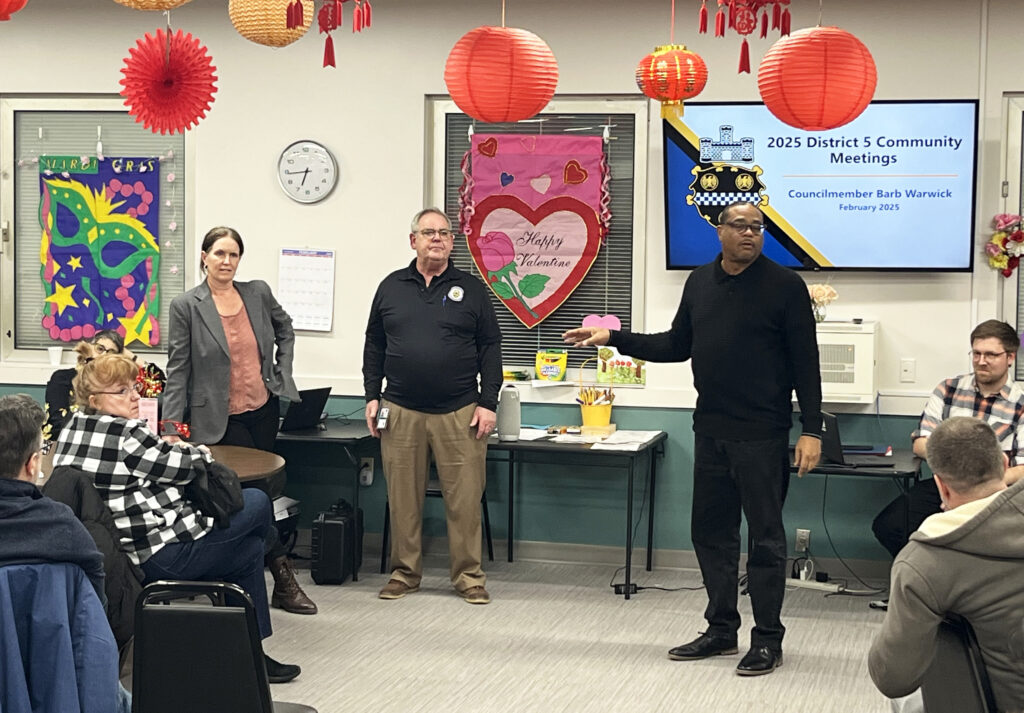
Some of their concerns and criticisms are valid. Clearly there is room for improvement regarding city services, and more adjustments should be made to the Ronald Street/Greenfield Avenue intersection. But the group’s behavior was churlish and abusive. Had they bothered to remain for the presentation on District 5 improvements, they would have gotten updates on significant progress. Instead, they chose to hijack the first hour and then abruptly leave.
These days, too many use their voice to scream demands while employing uber-aggressive bullying tactics as a means to return to their romanticized past—to what they believe is their community, their country. Newer Greenfield residents are now being treated with disdain, contempt, and as outsiders. Recent online community message-board posts describe neighbors being harassed for speaking Spanish at the Greenfield Giant Eagle.
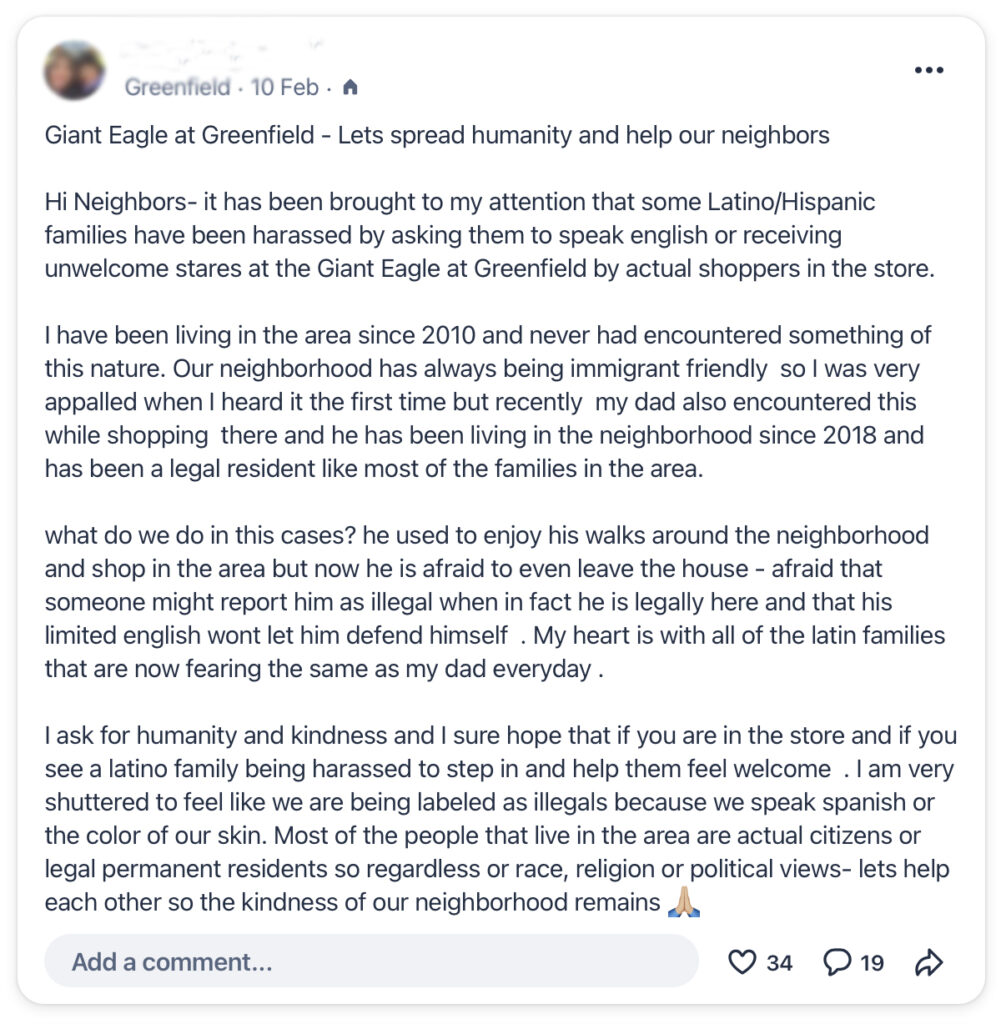
Progressivism brought about democracy, freedom of speech and assembly, freedom of the press, women’s and minorities’ right to vote, the right to form or join a union, and much more. The root word of “progressivism” is “progress,” once described by Immanuel Kant as a movement away from barbarism toward civilization. If progressive values and accomplishments are so bad and wrong, what do more “moderate” voices intend to replace them with?
As a Greenfielder who lives in the house I grew up in, whose family history here stretches back to the late 1800s, I don’t believe my voice counts more than others’—regardless of when they moved into the neighborhood or where they’re from. And I want all my neighbors to live a good life, regardless of their level of emotional maturity and prejudices. But it seems a minority faction would rather employ authoritarian tactics to claw back their perceived entitlement to sovereign authority.
Those who are truly committed to community find a way to peacefully reach consensus. As President John F. Kennedy said, “If we cannot now end our differences, at least we can help make the world safe for diversity.”
Gainey, O’Connor Kick Off Primary Fight
Junction Coalition covers the mayoral race from a 15207 perspective
Gloomy weather couldn’t dampen the enthusiasm for a Feb. 2 forum with incumbent Mayor Ed Gainey and County Controller Corey O’Connor, sponsored by the 14th Ward Independent Democratic Club. Just under 300 people rubbed shoulders with the candidates during a meet-and-greet before everyone squeezed into the Eddy Theater auditorium at Chatham University. East End Print’s editor and publisher Ann Belser conducted one-on-one interviews with Mr. Gainey and Mr. O’Connor, then moderated a brief yet feisty debate between the two.
Housing and budgets
During the debate, the two candidates agreed on progressive ideals like gun control and non-cooperation with U.S. Immigration and Customs Enforcement.
They even agreed in broad strokes on the hot-button local issue of affordable housing, with Mr. Gainey touting his inclusionary zoning plan and Mr. O’Connor saying he had supported that type of zoning in Bloomfield and Lawrenceville during his time on city council.
But they do not agree on the finer points. Mr. Gainey’s proposal would require developers citywide to set aside 10% of units to price within reach of lower-income households. Mr. O’Connor asserted that neighborhoods should have varying affordability standards. He also accused the Gainey administration of holding Pittsburgh back from building new developments quickly enough.
“The big shame of it is we are not growing, and we are not growing fast enough,” Mr. O’Connor said. “We need more than a thousand units a year.” He added that the city needs to make things easier for developers who want to build and “get [Permits, Licenses and Inspections] working faster so Pittsburgh is open for business.”
Mr. Gainey said it was fair to ask developers for concessions in return for things like allowing building on smaller lot sizes and waiving parking requirements, especially since previous housing programs haven’t stopped the city from losing residents.
Mr. O’Connor accused the incumbent mayor of “wasting” the $335 million in federal COVID-19 relief Pittsburgh received by hiring 100 new city employees instead of spending it on snowplows, rec centers and information technology.
Mr. Gainey replied that Pittsburgh’s problems with outdated equipment, understaffed departments and crumbling infrastructure predate his tenure by over a decade.
The Pittsburgh Post-Gazette reported that previous Pittsburgh mayor Bill Peduto’s administration ignored repeated warnings from bridge safety inspectors. This culminated in the collapse of the Fern Hollow Bridge early in Mr. Gainey’s term.
Pittsburgh still managed to end 2024 with a $4 million budget surplus, Mr. Gainey said. He pointed out that Allegheny County has similar budget worries — and, unlike Pittsburgh, had to raise taxes for 2025.
Issues affecting 15207
Mr. Gainey has spent three years as Pittsburgh’s mayor. Mr. O’Connor served for 10 years as City Councilor for District 5 (which includes 15207).
Ms. Belser’s first question for debate concerned whether speed humps are effective enough to be worth the hassle. She noted, “Everybody wants them on their street, and nobody wants them anywhere else.”
Mr. O’Connor answered that while on City Council, he helped put in some of the first speed humps in the city. He praised the Gainey administration for adopting a Vision Zero policy that aims for zero traffic deaths.
“Speeding is a thing,” Mr. O’Connor said. “We have to protect our residents; we have to ensure that there are no strips in the city of Pittsburgh where you can exceed the speed limit [by up to] 20 to 30 times.”
Mr. Gainey described traffic calming as a way to “create equity in our communities.”
“When I came in,” he said, “we had a whole lot of speed bumps in Squirrel Hill. But you had no speed bumps in Glen Hazel, none in Hazelwood, none in Greenfield.”
In 2022, Pittsburgh City Controller Michael Lamb’s office released a performance audit of the city’s Department of Mobility and Infrastructure, or DOMI, that highlighted how traffic-calming measures were being applied unevenly in Pittsburgh.
The audit included maps that showed 100% of speed humps in District 5 concentrated at its northern end, in Squirrel Hill South. In the two years since that audit was released, an increase in the traffic-calming budget and advocacy by District 5 City Councilor Barb Warwick resulted in DOMI adding speed humps and other traffic-calming infrastructure along Hazelwood, Greenfield, and Johnston avenues.
In the first two months of Mr. Gainey’s term, he canceled the Mon-Oakland Connector project pushed by CMU, University of Pittsburgh, the Peduto administration and ALMONO Partners (owners of the Hazelwood Green development). The publicly subsidized $23 million private roadway would have permanently degraded Schenley Park and commandeered public spaces in the historic Four Mile Run and Panther Hollow neighborhoods. Mr. O’Connor’s tenure as District 5 Councilor encompassed all six and a half years of residents’ fight to save their community.
Junction Coalition will continue covering the mayoral race as the May 20 primary election approaches.
‘Without the 56, I’m at home 24/7’
Cutting the 56 bus would strand some Lincoln Place residents
Editor’s note: This article is the third in a series on how changes proposed in the first draft of the Bus Line Redesign project for Pittsburgh Regional Transit (known as PRT) would affect riders in neighborhoods The Homepage serves.
Most of the Lincoln Place residents interviewed for this article said they no longer ride the bus, either because they work from home or because they found other forms of transportation. But others said they depend on the bus so much, the proposed redesign would change every aspect of their lives for the worse.
A bus line can be a lifeline
Tom Weber, 68, catches the 56 bus on Mifflin Road north of Interboro Avenue.
“Thankfully, the city has a pretty decent bus system that serves 90–95% of my transportation needs,” he said on Dec. 18.
But in the current version of the Pittsburgh Regional Transit redesign plan, the 56 would be eliminated and replacement routes would not serve this part of Lincoln Place. This spring, PRT will publicize a new draft of proposed changes they are calling “draft 2.0.”
Mr. Weber does not own a car and lives on a fixed income. He already walks a steep road to and from the bus stop. The proposed plan would leave him with only one transit option: Walk farther to catch a bus that would not take him to the places he needs to go.
Mr. Weber is always on the move, often riding the bus seven days a week. He volunteers at a church in Homestead. He is deeply involved at the Hazelwood Healthy Active Living Center and spends most weekdays there.
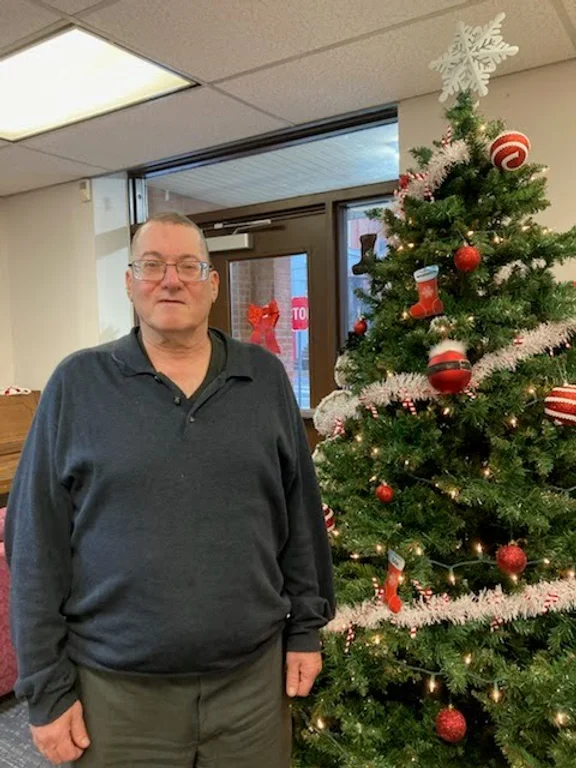
“The only time I don’t come in here [the Hazelwood Healthy Active Living Center] is when I have a doctor’s appointment,” he said. Mr. Weber sees specialists in places as far away as Elizabeth and Jefferson Hills. The 56 allows him to transfer to the routes he needs to get to all his appointments.
“These things are an integral part of my life,” he told me. “Without the 56, I’m at home 24/7.”
Mr. Weber, who said he has a history of depression, credits his busy schedule with keeping him healthy and happy during his retirement. “My involvement here at the center has basically saved my life. I’m able to do so much because my mental health has been so good from being active. It’s a circle.”
The devil is in the data
Laura Wiens, executive director of Pittsburghers for Public Transit, says one reason for the apparent disconnect between PRT’s plan and riders’ needs is the way PRT collected data for its first draft. In a Dec. 16 phone call, Ms. Wiens described the approach as “total amnesia about the system that exists, that people use it — and we have data based on that system.”
Instead of using trips taken on existing bus lines as a starting point for their plan, PRT used cell phone travel data to find the top destinations and origins in Allegheny County. This approach overlooks how people use public transit and cars for different purposes.
“Transit is not a shuttle service,” Ms. Wiens said. “It’s not just drawing a line between places, it’s about connecting people to as many destinations and origins as possible.”
Pittsburghers for Public Transit has been analyzing PRT’s current proposal and has identified changes needed to make a Bus Line Redesign that works for everyone, she said.
First, the changes should increase ridership while recognizing that the people who need public transit most are those who already use it.
“Non-disruption of existing riders needs to be a priority,” Ms. Wiens stressed. That includes avoiding adding transfers to current trips as much as possible. Transfers make trips longer and less reliable, no matter how well-appointed the transit hub is. And for cash users, transfers are more expensive.
In addition, PRT should make the transition simpler for riders by doing less and slowing down.
“It’s impossible for riders to respond [to the plan] because they are doing so much at one time,” Ms. Wiens said. “Since the routes, bus line names, frequencies, and number of transfers are all changing, it’s hard to answer the question, ‘What’s going to happen to my ride?’”
Mr. Weber echoed Ms. Wiens’ comments. “The main reason it’s so confusing is that they’re trying to change everything at once.”
Mr. Weber said he has worked hard to understand the proposed changes, including attending the Hazelwood community meeting.
“This morning I spent an hour and a half tracing routes to find dead spots and consider alternatives. Electric bikes aren’t cheap,” he added.
Similar problems for students
Like others in Greenfield and Hazelwood, Lincoln Place high schoolers use PRT buses to get to school. In Lincoln Place, students have farther to travel to get to schools like Allderdice located across the river. School commutes can go the other way, too.
A school guard who asked not to be named wrote in a Dec. 3 email that the school bus shortage has meant more and more students are riding PRT to school. “I brought this up at a PRT thing in Squirrel Hill and the gentleman said something to the effect of, we can’t plan on or around public school students. [Pittsburgh Public Schools] pays for a lot of those kids to ride the bus, why is their money no good?”
Emily Provonsha, PRT’s manager of service development, said after the Nov. 12 Hazelwood community meeting that PRT had met with school transportation directors from across Allegheny County. PRT asked the schools to share data on where their students travel to and from to reach school so PRT can compare those trips with the transit network.
Help push for a better ‘draft 2.0’
You can review the Bus Line Redesign proposal, get the latest on meetings, and comment to PRT at engage.rideprt.org/buslineredesign/buslineredesign-home. PRT said online comments will remain open until at least Jan. 31.
Pittsburghers for Public Transit is encouraging people to join them in advocating for a Bus Line Redesign that works for all. Visit pittsburghforpublictransit.org/petition-we-deserve-a-prt-bus-line-redesign-that-works-for-us-all/ to read and sign their statement detailing what PRT should do to improve the plan.
“They can get it right in draft 2,” Ms. Wiens said. “But they’ve got to shift some fundamental assumptions.”
This article originally appeared in The Homepage.
Hazelwoodians Tell PRT, ‘We Need the 93!’
After Pittsburgh Regional Transit released the first draft of its Bus Line Redesign project on Sept. 30, Hazelwood resident Tiffany Taulton had one top concern: How will her son and his classmates get to school at Allderdice? The plan eliminates the 93 bus line and replaces it with routes that don’t have stops in Squirrel Hill, Shadyside or Lawrenceville.
“Without the 93 bus, there is no connection to Squirrel Hill that gets [students] to school on time and safely,” Ms. Taulton said on Nov. 13.
On Nov. 12, the agency formerly called Port Authority, now known as PRT, gave a presentation on their new plan to the Hazelwood community meeting — where they heard many similar concerns from Hazelwood residents.
Proposed Hazelwood changes
About 35 people attended November’s monthly meeting in person and, another 20 used Zoom. Emily Provonsha, PRT’s manager of service development, said PRT is in its first phase of getting feedback about the proposed plan. As the weather gets colder, she said, they are planning fewer “pop-up” events in different neighborhoods. But people can still comment online until at least Jan. 31, 2025.
PRT will share another draft of proposed changes they are calling “draft 2.0” with the public sometime this spring. The new draft will incorporate the feedback they are hearing at events and meetings like this one. Stops for the new routes have not been proposed yet.
“One of the changes proposed in the first draft that reflects changes in transit demand after the pandemic is the proposal to discontinue many of the commuter flyer routes,” Ms. Provonsha wrote in a Nov. 14 email. “The ridership on many of the commuter flyer routes remains very low and has not recovered after the pandemic. That being said, we will take another look at this based on public feedback we receive and refer to more recent ridership data as well. In the first draft, given our constraint of having the same operating budget and number of bus operators, we redistributed service hours from the commuter flyer routes and put them into standard bus routes that operate all day, 7-days a week, and this increased trips throughout the midday and on weekends for many of our local bus routes.”
Ben Nicklow, a senior planner at PRT, listed and explained the new routes that would go through Hazelwood: D44, D52, and O53. A fourth route, N94, skirts the edge of Hazelwood. He also mentioned X50, which follows the route of the existing 61C route; and O50, which follows the route of the existing 61D. Those two routes do not go through Hazelwood, but they have stops near Hazelwood and could be reached by transfer.
“You will be able to connect to [X50] through the Waterfront,” Mr. Nicklow explained. “When you need to go somewhere in that service area, even if it looks like it’s not quite in the same travel corridor you do currently, it may come so often that even if you have to transfer it’s a quicker trip.”
Where Hazelwoodians are going
The team from PRT seems to have thought that Hazelwoodians travel to the Waterfront a lot more and to Squirrel Hill (along with other uphill neighborhoods) a lot less than they actually do.
When they took questions from meeting attendees, the questions centered mostly around the need for a direct connection between Hazelwood or Glen Hazel and Squirrel Hill. Attendees wanted one-seat rides to places other than Oakland and the Waterfront. Parents were concerned about their children getting to Allderdice.
Ms. Provonsha told me, “PRT recently held a stakeholder meeting in which we invited school Transportation Directors from all schools throughout the County to discuss their proposed changes and ask them to share data with us on where their students travel from to go to each school, so that we can compare those trips with the transit network.”
“I think they were surprised,” Ms. Taulton commented about the meeting. “I don’t think they realized the 93 was so critical, that people were using it to get to Squirrel Hill so much.”
She uses the 93 to get to work, do light grocery shopping, and get to her mom’s eye doctor, among other places. Hazelwood residents are going to Squirrel Hill not only for the necessities they lack in their own neighborhood, but for connections to the larger community.
Besides grocery stores and banks, Ms. Taulton and several other meeting attendees mentioned Zone 4 safety meetings in Greenfield and the JCC in Squirrel Hill. The JCC has the only pool nearby and offers activities for seniors. They also hold public meetings there.
Mary Bartol, who lives in Hazelwood, commented about the 93 at the Nov. 12 meeting.
“It satisfies every need we have because you can get off in Squirrel Hill to Schenley Park, then into Oakland — then you can go into Shadyside, get off anywhere there.” She said she sometimes visits Bloomfield and Lawrenceville and mentioned the new grocery store being built on Butler Street.
“We’d be lost without it,” Ms. Bartol said.
Lincoln Place PRT riders
Because PRT’s proposed changes are so complex and far-reaching, this article is one in a series. The next article planned is about Lincoln Place. Please email us at junctioncoalition@gmail.com if you want to be interviewed about how the bus line redesign would affect you.
You can review the Bus Line Redesign proposal, comment to PRT, and get the latest on meetings at PRT’s Bus Line Redesign website.
This article originally appeared in The Homepage.
15207 May Be Hit Hard by PRT Bus Line Redesign per Current Proposal
On Sept. 30, Pittsburgh Regional Transit (formerly Port Authority, now known as PRT) released the first draft of its Bus Line Redesign project.
Their proposal completely reroutes many transit lines. It also includes new schedules and new names for all the routes in the system. Because the changes are so complex and far-reaching, this article is the first in a planned series.
As it stands, PRT’s plan contains grim surprises for residents of Greenfield, Greater Hazelwood, and Lincoln Place. Future installments will focus on each of these areas.
Service cuts in parts of Greenfield
PRT’s interactive map shows a hole on Greenfield Avenue, where the 58 bus line now connects Second Avenue with Greenfield and other communities at the top of the steep hill. The redesign appears to merge the 58 with the 65, which now runs between Squirrel Hill and downtown.
As a result, people who live in upper Greenfield and work downtown would be redirected through Oakland. People who live in lower Greenfield and can’t walk up the hill would be cut off from the rest of the neighborhood. Greenfielders, who have long enjoyed the benefits of the neighborhood’s central location, could see their bus commute time double.
“I don’t understand it, why you just keep cutting, cutting, cutting, cutting,” said transit rider William Shorter at an Oct. 21 PRT pop-up event at the Giant Eagle on Murray Avenue. “People need these buses.”
“It would suck,” said Patrick Hassett, who has lived in Greenfield since 1989. “It would suck for me, my elderly buddies, and businesses that depend on transit for their employees and customers.”
Mr. Hassett said he has spoken with proprietors along Greenfield Avenue who are concerned that the route changes will make it difficult or impossible for people to get to their business.
Although Mr. Hassett considers himself a Greenfielder first since his retirement, he earned degrees in planning and transportation and worked for the City of Pittsburgh for 26 years in transportation and development.
When we met on Oct. 9 to review the map, Mr. Hassett identified Greenfield and Murray avenues as the two main commercial corridors that serve Greenfield.
“The most important transit spine is Greenfield Avenue,” he said. “Murray Avenue doesn’t penetrate the neighborhood like Greenfield Avenue does, although its commercial district is important.”
Pittsburghers for Public Transit’s director of communications and development, Dan Yablonsky, said the organization is holding meetings about the Bus Line Redesign every week to better understand what is being proposed and to shape their response.
Prioritizing bus rapid transit
The proposed plan’s effect on Greenfield is the opposite of PRT’s stated goal to “prioritize equitable investment by aligning service with land use and socio-economic changes.”
The source of the disconnect in PRT’s plan may be two-fold: the bus rapid transit model around which the plan is designed, and its “cost-neutral” funding scenario.
Mr. Hassett said bus rapid transit is not a new idea, and other cities like Kansas City and Indianapolis have been using it for more than a decade. Bus rapid transit focuses on connecting employment centers — in Pittsburgh’s case, downtown and Oakland.
“That system requires you to adjust the transit network so that service to the corridor is maximized. What suffers is local service,” he said.
“Right now, the buses filter through Pittsburgh’s many neighborhoods and smaller centers of employment,” he said. “The effect on Greenfield is obvious, but similar problems could occur with Lawrenceville, Squirrel Hill, and South Side [with this plan]. You still get local service, but it is less effective and more tuned to commuter needs. Many of the routes are redesigned to get you to Oakland.”
Mr. Hassett said discussions of bus rapid transit, or BRT, have been percolating in Pittsburgh for over a decade, too, but were previously shelved for competing transit priorities, plus a lack of funding and political support. He questioned whether the model of redirecting commuters to key job centers is an appropriate response to the effects of COVID-19 on transit demand.
“How have they modified the BRT model since the pandemic?” he asked. “You’d think people working from home would require more diffuse neighborhood service, not less.”
PRT’s cost-neutral plan means that the bus rapid transit investments would come at the expense of existing community services. In their Allegheny County Visionary Service report, Pittsburghers for Public Transit encouraged PRT to also consider versions of the Bus Line Redesign where service can grow with funding increases.
The Bus Line Redesign website includes a section imagining they will have 20% more funds. But those funds would not restore eliminated routes in neighborhoods. Instead, they are earmarked for increasing service on the proposed routes and establishing new “microtransit zones” in several neighborhoods including Oakland.
Mr. Yablonsky said, “We didn’t know what to expect, just that the framework they set up was cost-neutral. And like Laura [Wiens, executive director of Pittsburghers for Public Transit] always says, any redesign that doesn’t look at a growth scenario is rearranging deck chairs on the Titanic.”
Help turn this bus around
PRT says they are in the process of gathering feedback from transit users. At the time of this writing, they had scheduled several “pop-up” meetings for mid-October. You can review the Bus Line Redesign proposal and get the latest on meetings at engage.rideprt.org/buslineredesign/buslineredesign-home.
Mr. Hassett encouraged Greenfield transit users to ask themselves how the new routes would affect their ability to get to the Greenfield Giant Eagle, Magee Rec Center, St. Rosalia’s church, and other Greenfield destinations they need to visit. How much longer would the trip take, and how much more walking would be involved to get to the bus stop?
Pittsburghers for Public Transit says their organization is approaching the Bus Line Redesign with caution because of concerns like these. According to their website, their focus is “that PRT should ‘Do No Harm’ with the new design, at the least.”
Mr. Yablonsky invited residents of hard-hit neighborhoods to “organize with their neighbors and join up with [Pittsburghers for Public Transit].” He said the group will hold a Zoom organizing meeting on Nov. 13 from 7 to 8:30 p.m. where they will discuss the proposal and decide what changes to push for. Email info@pittsburghforpublictransit.org for details.
PRT will address the Greater Hazelwood community meeting on Nov. 12.
This article originally appeared in The Homepage.
It’s a Road: What’s Missing from DOMI’s Sylvan Avenue Trail Plan
Plan disregards environmental issues, lacks transparency and needs more public input
At the Aug. 22 public meeting about this project, representatives from the Pennsylvania Department of Transportation and the City of Pittsburgh Department of Mobility and Infrastructure, also known as DOMI, fielded questions about management of stormwater and springs in the project area, landslide prevention, the dangerous intersection at Sylvan and Greenfield avenues, steep inclines on Waldeck Street and along the proposed trail, light pollution from proposed streetlights, landscaping maintenance and invasive plants, and the effects on nearby residents.
These matters are not easily addressed. Yet when attendees asked about them, DOMI project manager Michael Panzitta responded, “That’s a good point” or, “We’re looking into that.” How has DOMI not heard the same resident concerns since 2018, when the Sylvan Avenue Trail was first proposed as phase 2 of the Mon-Oakland Connector shuttle road between Oakland university campuses and the Hazelwood Green development?

Community input
Discussion of this trail began with the Mon-Oakland Connector (MOC) instead of the communities in its path. Public meetings about development and infrastructure projects should focus on dialogue, not checking the “community engagement” box in a rush toward predetermined outcomes. Since 2022, Junction Coalition has been calling on the city to adopt our guidelines for public engagement, including announcing meetings at least 14 days in advance and posting the meeting slides with the announcement.
The city continues to fall short, as well as not following state guidelines for community involvement in greenways outlined in the Pennsylvania Trail Design and Development Principles.
Transparency
The design presented bore a striking resemblance to the MOC. Controversy plagued the plan partly because of dishonest tactics used to force it on affected communities. Opacity was and is its hallmark: inadequate community outreach for public meetings, evasive answers and an unwillingness to clearly define the scope of and intentions behind each phase of the project.
For example, while holding public meetings about the shuttle road in 2018, DOMI hid its grant applications for work on the Sylvan Avenue portion of the road.
Before informing affected communities about the MOC through a Pittsburgh Post-Gazette article, former mayor Bill Peduto’s administration filed a fraudulent grant application for the project for $3 million and then tried to cover it up, violated the Pennsylvania Sunshine Act, and repeatedly violated PA’s Right to Know law throughout the years-long process of trying to bully the plan through.
The recent Sylvan Avenue Trail meeting presentation did not even include a budget slide. How much money has the Sylvan Avenue Trail received as part of the MOC? How much is budgeted to address the major environmental and safety issues, like an abandoned mine under part of the project area?
Slides showed an unrealistic rendering of the trail with mature plantings to obscure removal of existing trees and gentle slopes instead of cliffs.
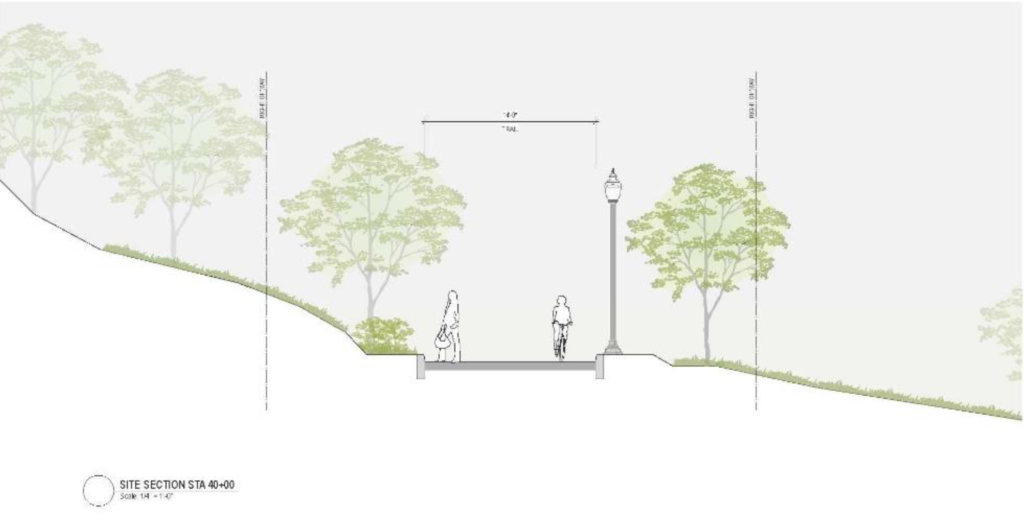
Some residents who arrived early said they were told city officials were holding a separate, closed-door meeting with PennDOT before the public meeting.
And according to Mr. Panzitta and Pittsburgh Neighborhood Services infrastructure engagement specialist Jan Raether, this was to be the only public meeting about the Sylvan Avenue Trail.
Unfortunately, this territory is all too familiar. It is obvious to us and others in Greenfield and Hazelwood that, although Mayor Ed Gainey canceled the MOC, DOMI has continued to plan out a buildout of the project.
What’s not missing from the Sylvan Avenue Trail project is red flags that point to a road paved with bad intentions.
Some residents of Greenfield and Hazelwood have organized meetings to discuss the project and reach consensus on an alternative proposal. Reach out to Junction Coalition at junctioncoalition@gmail.com if you are interested in getting involved.
Originally appeared in The Homepage
Transit Report Urges Local Riders to Dream Big and Campaign Hard
Advocates set 2020 transit levels as first milestone but aim to restore 20 years of service cuts
Big changes are coming to public transit in Allegheny County with Pittsburgh Regional Transit’s Bus Line Redesign project. As the public transit agency (formerly Port Authority, now known as PRT) prepares to release a draft of its plans in the coming weeks, Pittsburghers for Public Transit is encouraging riders to advocate for the service they need—and the funding to make it happen.
A vision for better transit
In August, Pittsburghers for Public Transit published a report titled Allegheny County Visionary Service that views the Bus Line Redesign planning period as an “opportunity to reverse the trend of budget and service cuts.”
The Bus Line Redesign will propose four versions of a revamped bus network. They will differ based on levels of funding: cost-neutral, 15% decrease, 10% increase and 20% increase.
According to the transit advocacy group’s report, our region has seen a more than 37% cut in public transportation service over the past 20 years. “That has led to a transit system that doesn’t go where we need it to go, long wait times between buses, and service that doesn’t always run at the times we need it,” the report states.
Against this dismal backdrop, it makes sense that PRT would prepare for more cuts, even though they would be catastrophic for an already gutted system. Redesigning the network with no change in funding would present problems of its own, because some communities would have to lose service to allow others to gain service.
Pittsburghers for Public Transit encouraged PRT to also consider versions of the Bus Line Redesign where the bus network can grow with funding increases. This would still leave much work to be done. Even a 20% increase in service would merely restore the amount of service provided before 2020. Although 2020 levels of transit service fell short of meeting community needs, the report calls for getting back to that level as an important first step.
‘Transit champions’ can help
The Allegheny County Visionary Service report identifies local, state and federal officials pushing to expand funding for public transit including the PRT.
Pittsburgh Mayor Ed Gainey’s transition team in 2022 recommended that the city work with PRT to “make its use easier and more attractive to encourage ridership” (p. 103). Their transition report showed an understanding of the need to improve transit service frequency and expand its hours.
Allegheny County Executive Sara Innamorato built her 2023 campaign partly on a platform of improving public transit.
In his 2024 budget address, Pennsylvania Governor Josh Shapiro called for increasing the state’s public transit funding by $282 million without levying new state taxes. PRT would receive $40 million of these state funds, which would increase their operating budget by more than 7%. In July, an $80 million stopgap was passed from the state’s surplus to the Public Transportation Trust Fund.
Reps. Summer Lee and Chris Deluzio are co-sponsoring the “Stronger Communities through Better Transit Act,” a federal bill that would provide funds to transit agencies of PRT’s size and larger. Allegheny County would receive an additional $175,586,810 in transit operating funding, allowing for up to 37% more service.
These funds could make a huge difference to riders and the whole region.
“It’s not just PRT that needs to hear from people, but also legislators,” Pittsburghers for Public Transit executive director Laura Chu Wiens said during a July 31 phone call.
Another bus line for Hazelwood?
In 2019, residents and organizations in Greenfield, Hazelwood and other communities worked with Pittsburghers for Public Transit to draft Our Money, Our Solutions, an alternative plan listing needed improvements that cost less than the Mon-Oakland Connector’s original $23 million budget.
The Mon-Oakland Connector envisioned a privately-run shuttle from Oakland through Schenley Park, Four Mile Run and Hazelwood to Hazelwood Green. The project, designed to serve university and research interests, was scrapped by Mayor Ed Gainey in early 2022 after years of community outcry.
The city and PRT adopted some items from Our Money, Our Solutions, like additional weekend service on the 93 bus line. Another top transit item, extending the 75 line across the Hot Metal Bridge into Hazelwood, has been under discussion. More transit funds and renewed local support could make the extended 75 line a reality.
It’s an example of what Pittsburghers for Public Transit would like to see happening throughout Pittsburgh’s neighborhoods.
“We hope people will be galvanized by the opportunities from getting more funding and what that would look like, how it could benefit their communities,” Ms. Wiens said.
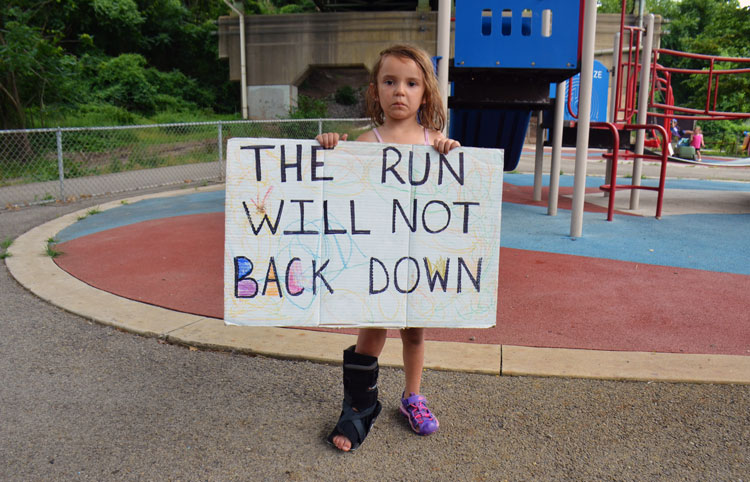
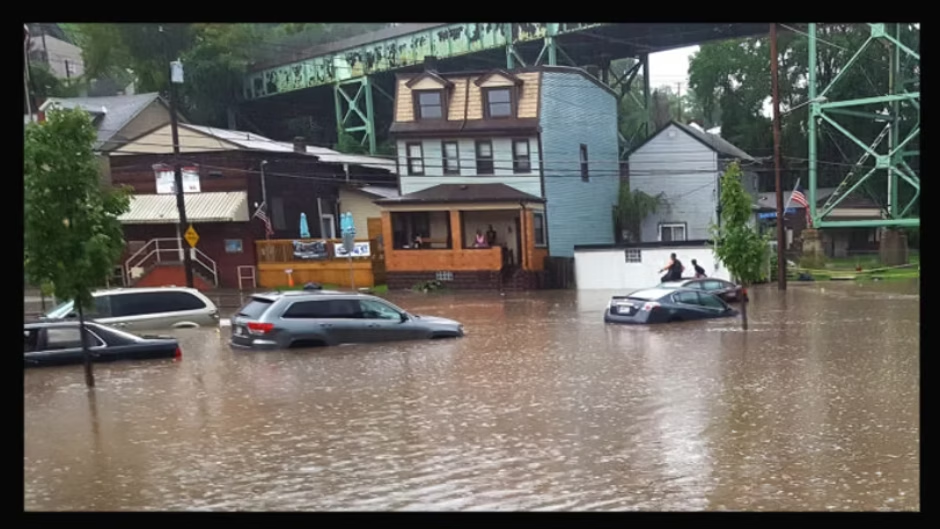
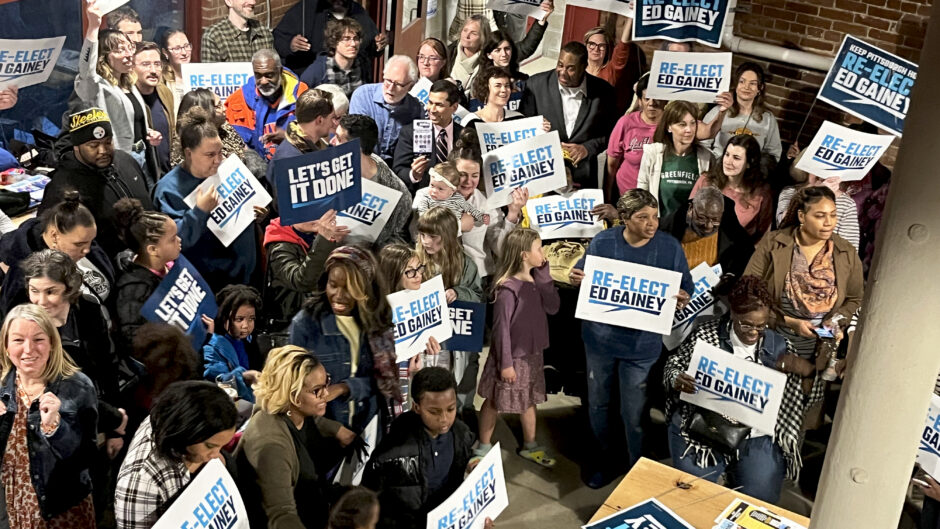

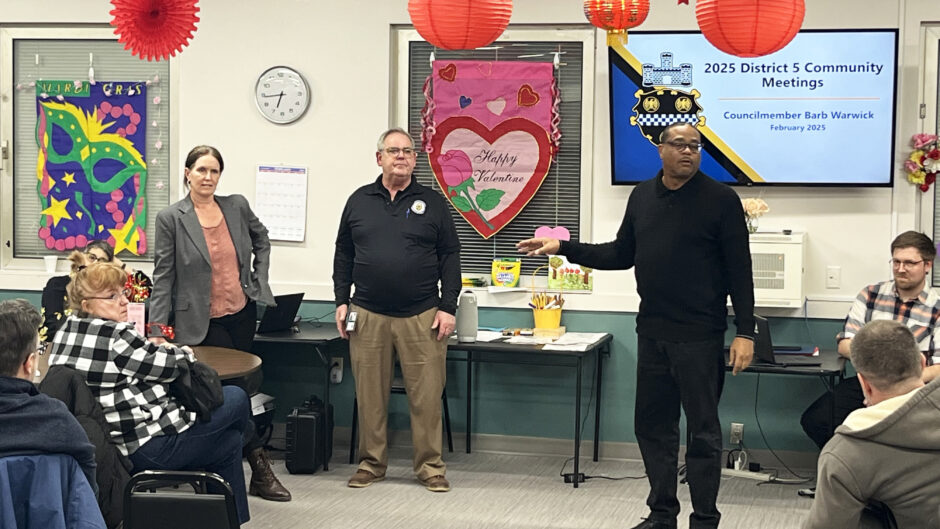
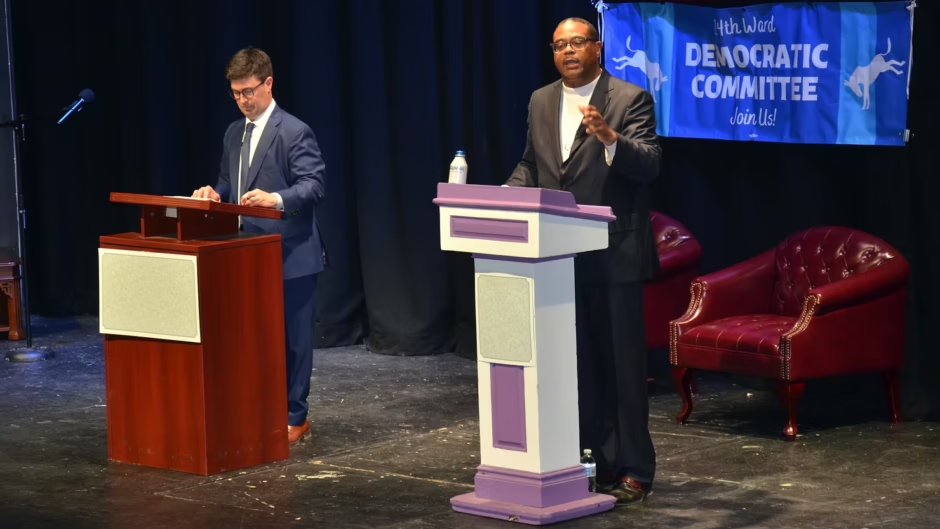
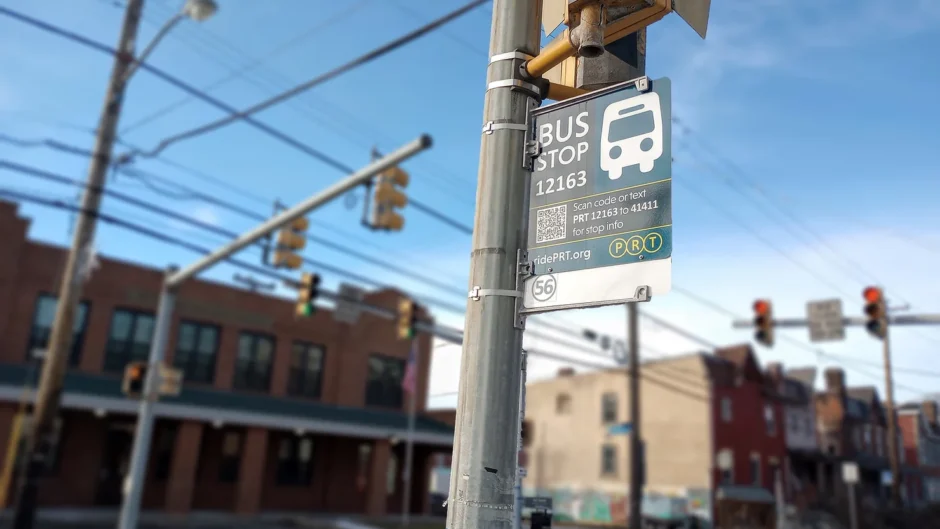
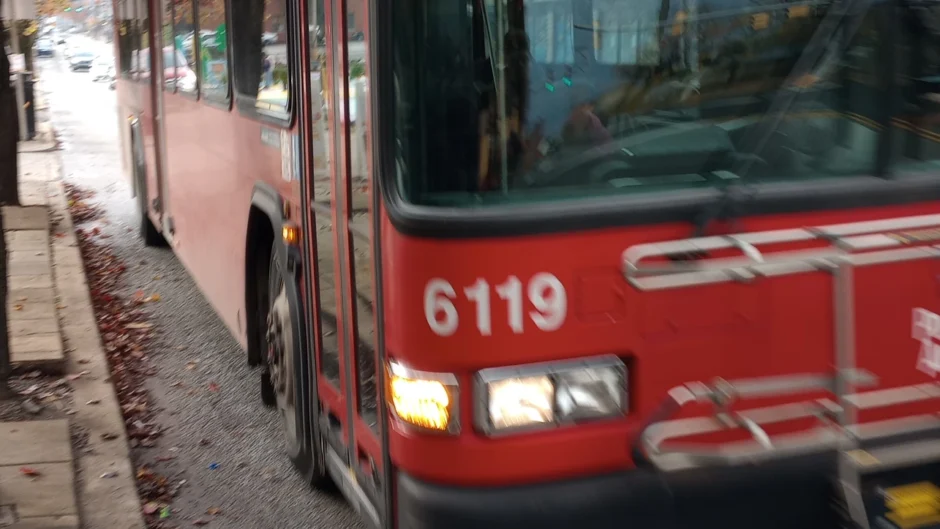
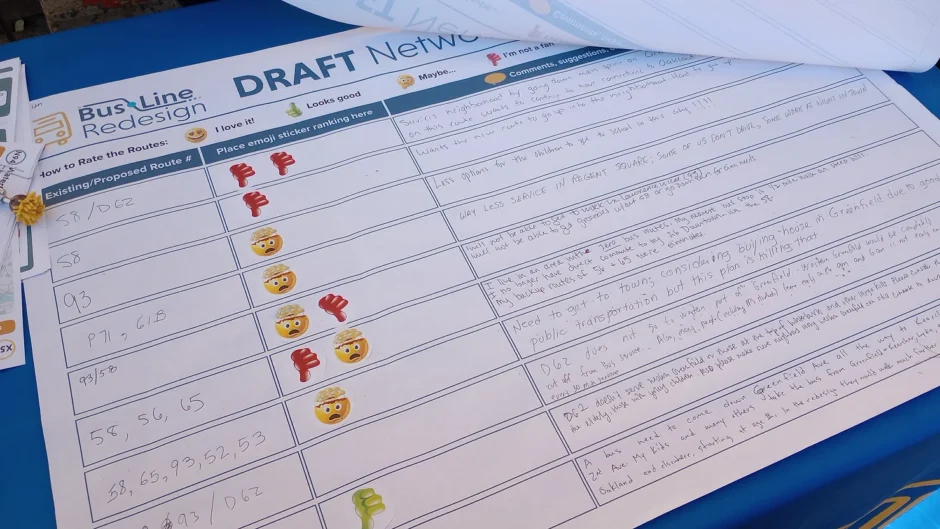
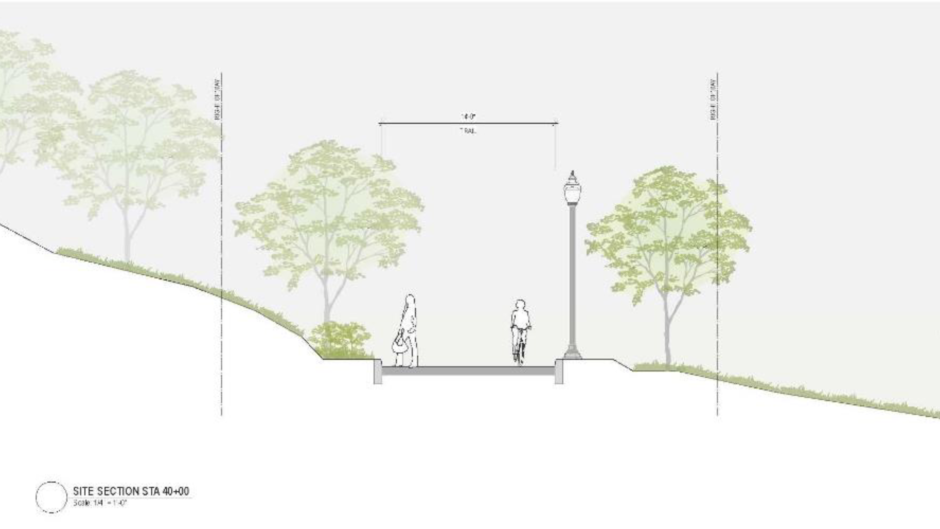
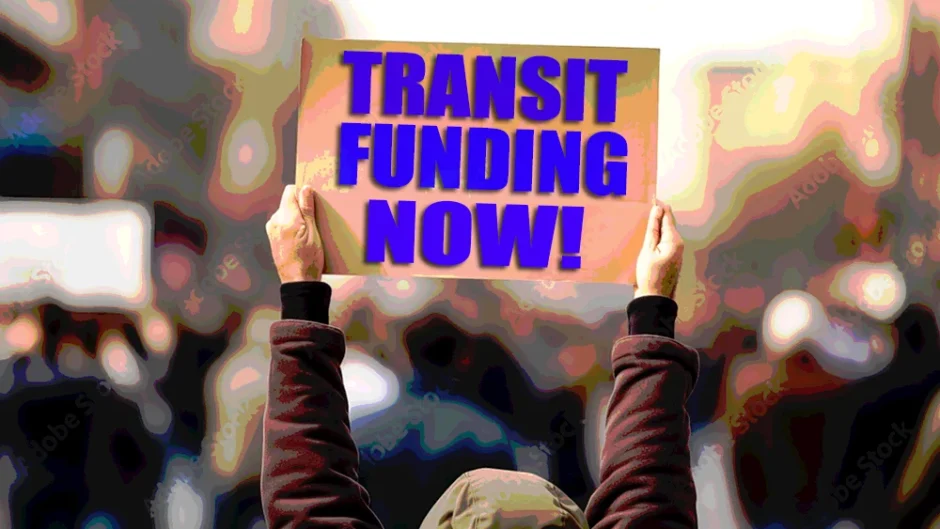
Recent Comments